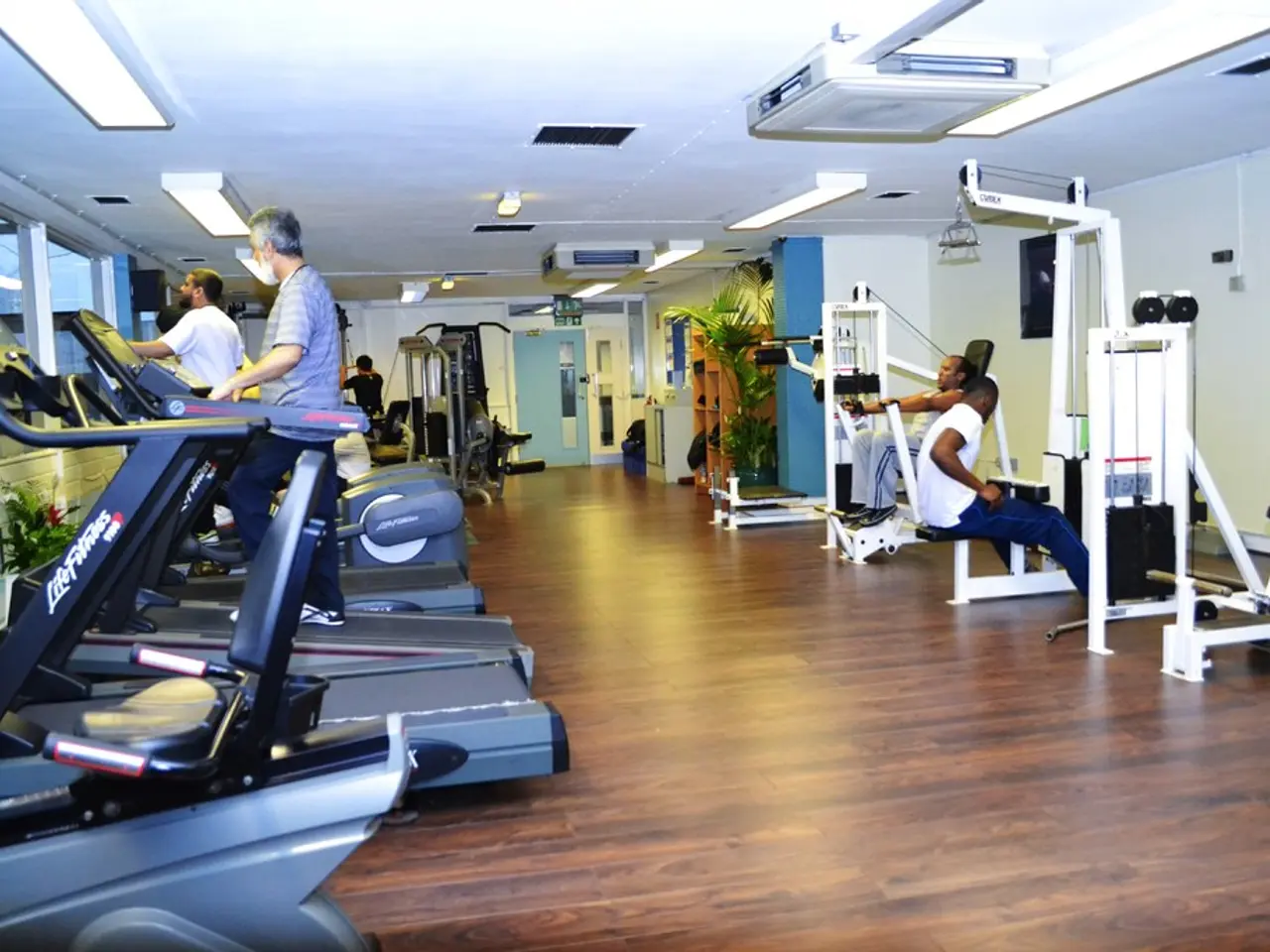Calisthenics Explained: Essential Knowledge on Techniques, Workouts, and Additional Info
In the realm of physical fitness, calisthenics has emerged as a versatile and accessible workout method that offers numerous health benefits for individuals of all ages and fitness levels. Originating in Ancient Greece, this exercise regimen has gained popularity in recent years due to its simplicity and effectiveness.
Calisthenics is a workout type that primarily involves bodyweight exercises and little to no equipment, making it easily adaptable for beginners or those returning to exercise. Most exercises, such as pushups, squats, crunches, planks, lunges, burpees, and pull-ups, can be performed almost anywhere, without the need for weights such as dumbbells or barbells.
Performing calisthenics exercises regularly offers multiple health benefits that impact physical fitness, body composition, mental well-being, and functional ability.
Builds Strength and Muscle
Calisthenics enhances muscle strength by engaging multiple muscle groups simultaneously through compound movements like push-ups and pull-ups, leading to balanced muscle development and increased muscle control. A study in Neuro Rehabilitation found that a program that included calisthenics led to increased muscle strength, decreased anxiety, and improvements in balance in people with multiple sclerosis.
Improves Body Composition and Appearance
Regular calisthenics workouts, especially core-focused routines, help sculpt and define the midsection, support fat loss, and improve overall body composition. This, in turn, reduces risks linked to obesity-related conditions such as type 2 diabetes and cardiovascular disease.
Enhances Functional Fitness
The training emphasises strength, balance, coordination, and body control, which translates into better real-world movement and performance in activities like lifting, running, and daily tasks.
Promotes Cardiovascular Health
By placing regular demands on the cardiovascular system through controlled, rhythmic bodyweight movements, calisthenics boosts cardiovascular endurance and overall body well-being.
Reduces Lower Back Pain
Strengthening the core muscles helps stabilise the spine and improve posture, which can alleviate lower back pain and reduce injury risk.
Increases Flexibility and Coordination
The variety of motions involved (bending, twisting, stretching, jumping) improve flexibility and neuromuscular coordination.
Supports Mental Resilience and Discipline
The progressive nature of calisthenics fosters mental discipline, confidence, and a sense of accomplishment as individuals see clear improvement over time.
Safe and Accessible
Calisthenics requires little to no equipment, making it easily adaptable for beginners or those returning to exercise, and generally safe across all ages and fitness levels. A study published in 2019 found that strength training, including calisthenics, had benefits for mental well-being and physical health in older institutionalized adults.
For those seeking to start a calisthenics routine, a starter routine may include pushups (5-20 reps), squats (5-20 reps), plank (30-45 seconds hold), lunges (10-15 on each leg), and jump rope (30 seconds). The number of reps in the starter routine can be gradually increased with practice.
In conclusion, regular calisthenics training builds comprehensive fitness—strength, endurance, flexibility, coordination—while improving mental health and functional ability, with added benefits such as better body composition and reduced back pain. Whether you're a beginner or an experienced fitness enthusiast, incorporating calisthenics into your routine could be a game-changer for your overall health and well-being.
- Calisthenics, a fitness type, can be beneficial for individuals with ulcerative colitis or Crohn's disease, as it requires minimal equipment and can be adapted to suit various fitness levels.
- A predictive study suggests that engaging in regular calisthenics exercise could reduce the risk of developing asthma or spondylitis, especially among those with a family history of these conditions.
- For people living with HIV, calisthenics could potentially enhance their quality of life by improving muscle strength, body composition, and mental resilience.
- Individuals with diabetic neuropathy could find relief from symptoms like numbness and pain through training in fitness-and-exercise routines like calisthenics, which improve neuromuscular coordination.
- In the field of health-and-wellness, calisthenics has gained recognition as a potential tool for managing depression by promoting mental discipline, confidence, and a sense of accomplishment.
- For those suffering from obesity-related complications such as type 2 diabetes, regular calisthenics workouts could lead to improved body composition, reduced fat mass, and increased muscle mass, aiding in weight management.
- For people dealing with multiple sclerosis, a condition characterized by nerve damage and inflammation, a fitness regimen combining calisthenics can lead to increased muscle strength, improved balance, and reduced anxiety.
- Scientists believe that regular practise of calisthenics could help individuals with ankylosing spondylitis, a type of inflammatory arthritis that primarily affects the spine, by improving flexibility, coordination, and core strength.
- In the case of people living with AQ (Autoimmune-related disorders), calisthenics could potentially serve as a complementary exercise method to help manage symptoms, improve overall fitness, and boost the immune system.
- For individuals with a sedentary lifestyle, calisthenics can offer an accessible and versatile fitness option, making it easier to integrate physical activity into daily routines, thereby enhancing general health and alleviating the risk of sedentary-related diseases.




